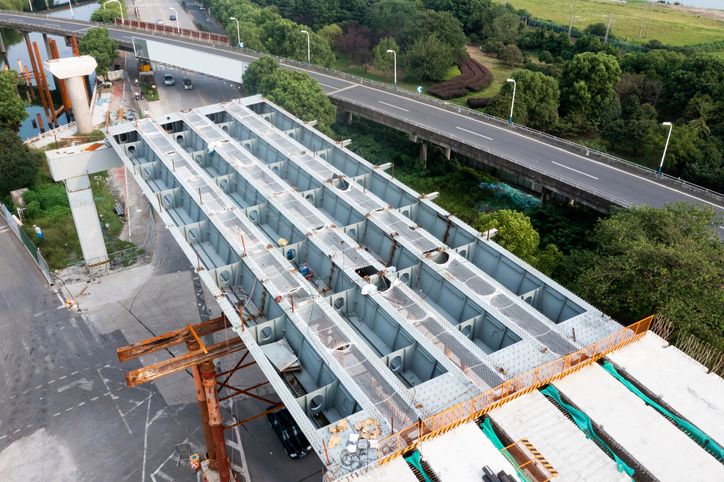Source: dowell / Getty
Black residents in South Carolina could be in trouble of losing their homes as the state plans to widen a freeway interchange to help alleviate highway congestion in the area. The $3 billion proposed plan would destroy 33 single-family homes, four apartment buildings with at least 35 units, 11 mobile homes, eight duplexes, two community centers, and at least one church. 94% of the residents in this area of North Charleston are black and brown people and many residents are worried about losing their homes.
The proposed highway expansion would widen both interchange I-26 and I-526, which sit between Liberty Park and Highland Terrace. Both interchanges are highly congested and city officials say the project must be done. As the surrounding counties continue to grow the highways can not handle the sheer amount of daily traffic. The population in these surrounding counties has doubled since the 1960’s. Many residents of color say they haven’t been properly informed of their options and have no plan if they are kicked out of their homes.
The first interchange expansion project was proposed in 2010. In 2019 the state proposed a second project, which would allow work to be done on both highway interchanges simultaneously. Environmental groups immediately pushed back saying it infringed on the rights of citizens in black and brown communities. The state took note and promised to add a provision that would benefit residents who might have to leave their homes due to the project. The state plans to build 100 units of affordable housing, and offer financial counseling for new homeowners. They also plan to build a walkway bridge to navigate over the highway by foot and add parks to the area with better lighting. The improvements will come with a price tag of around $100 million.
The Biden administration’s $1.2 trillion infrastructure bill, which is awaiting a House vote, includes provisions to help communities of color that were disproportionately affected by decades of infrastructure plans created to harm black families. During the expansion of America between 1930 and 1950, freeways, dams, landfills, and power plants were strategically built on top of black communities to keep whites separated. This practice was called “sacrifice communities.” But how was this legal and is it still legal today? The short answer is, yes; eminent domain.
State and local governments can seize land own by private citizens through a law called eminent domain. Eminent domain is the right of a government to take private property for public use. It can be used by both federal and state governments but is most often seen in situations where the government wants to build on or near land that was not originally theirs. Eminent domain allows them to do so without compensating the original owner, although most eminent domain proposals come with some type of compensation offer, rarely close to the amount your home or land is worth.
SEE ALSO:
South Carolina State University To Eliminate $9.8M In Student Debt
Report: Former NFL Player Phillip Adams Kills 5, Then Himself After Mass Shooting In South Carolina
‘Orangeburg Massacre’ In South Carolina Occurred On This Day In 1968
UPDATED: 1:00 a.m. ET, Sept. 6, 2021 — National Read A Book Day, which falls on Monday, couldn’t come at a better time. Not only is the start of the school year upon us, what with students loading their backpacks with books and other study materials. But it is also a time when there is no shortage of books addressing certain unavoidable topics like race that fuel conversations in the classroom and at home. MORE: 5 Books Addressing Race That Every Teen Should Read And while there are many ways to stay informed in the age of the internet, opening up a book and reading it is a true throwback that provides experiences that aren’t always accessible online. All of which is why at NewsOne, we believe that the child who reads is the child who leads. In keeping with that idea, we decided to take a look at the state of reading for Black youth. MORE: 15 Acclaimed And Unapologetically Black Authors Research has found that the proportion of young people who are daily readers drops has dropped dramatically in recent years. According to some studies, since 1984, the percentage of 13-year-olds who are weekly readers dropped from 70% to 53%. Even worse, the percentage of 17-year-olds who are weekly readers fell from 64% to a startling 40%. And the percentage of 17-year-olds who never or hardly read tripled during the same period, from 9% to 27%. It’s jarring news. MORE: Read A Book Day: 15 Acclaimed And Unapologetically Black Authors We tapped our brother and sister sites Hello Beautiful and The Urban Daily to get their reading recommendations. Here are dozens of titles they said had an impact on them and that every Black youth should read.
South Carolina Plans To Destroy Black Neighborhood To Build A Freeway was originally published on newsone.com
Get Informed!
An Urban One Brand
Copyright © 2021 Interactive One, LLC. All Rights Reserved.
Powered by WordPress VIP
An Urban One Brand
Copyright © 2021 Interactive One, LLC. All Rights Reserved.
Powered by WordPress VIP

